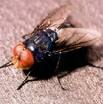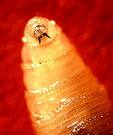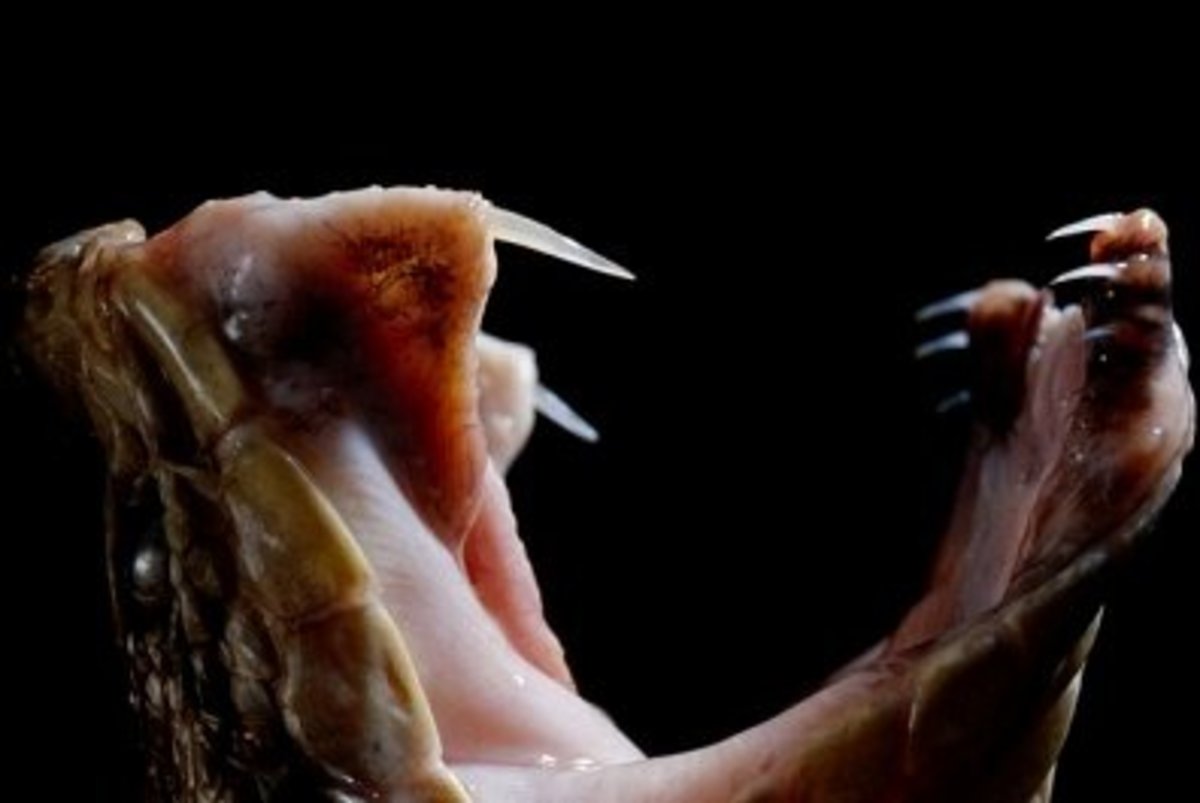The Screwworm - Cochliomyia Horminivorax - is a Real Man-Eater!
This menace keeps coming back
Click thumbnail to view full-size




A Major Triumph for Science
*Maggots that gobble living flesh
*Factories with rigid security
*The Fly that has killed thousands of humans and millions of cattle!
Of all the nasty insects waiting in the wings (and on the wing) to feast upon our long-suffering bodies, the Screwworm Fly, or its larvae - actually a maggot - is one of the most sickening and potentially dangerous insects known to to man.
Most maggots can actually do good as well as harm, as they live on dead tissue, cleaning it, and its bacteria, from open wounds. In fact, maggots have actually been used by the medical profession to do just this, providing secondary infection is held in check and the cleansing is well supervised and dressed.
But the screwworm maggot is another beast entirely. It, too, feasts on dead flesh, but doesn’t stop there; it will also gorge on living tissue, literally "screwing" itself deep into any suitable site, such as a cut, graze or scratch, eventually causing horrific wounds, compounded by the maggot’s own contribution of poisonous saliva, and the eventual death of the host.
Adult flies, which resemble Blowflies, but with demoniac red eyes, deposit the eggs in any open wound where they hatch within a matter of hours and begin to fulfil their mandate: eat until there’s nothing left. The adult fly only lives for a few weeks, but during its brief lifespan, can lay thousands of eggs on its victims; up to 500 at a time. If the flies can’t find an open wound to lay, they are capable of laying their eggs in body orifices as well: commonly, the nose and ears. One can only imagine the pain and confusion caused by a bunch of hungry maggots deep in the ear canal. The type of scenario horror movies like to feature.
People returning from the tropical regions favoured by the screwfly, such as the Caribbean Islands, Central and South America, have often had to have hundreds of maggots removed from deep wounds around the face and head. Makes you want to spend the summer hols. in good old Brighton, doesn’t it? (No? You’d rather take a chance on getting ‘screwwormed than getting screwed? Me, too!).
In the Nineteenth Century, before the life-cycle and effects of screwworm infection were really understood, the insects caused thousands of deaths in poorer regions of the world and in places such as the disgusting French penal colonies in French Guiana. But the real effects of the screwworm’s attention has been in the cattle industry where they have caused millions of dollars worth of loss due to dead stock, or animals that were too sickly to have much value at market…a 2000 pound beast with a full blown screwworm infection can be dead within a week.
Finally, sick of the 500 million-a -year loss, the cattle industry in the United States along with scientists, devised a cunning plan to limit the screwworm fly’s ability to breed. This was an extremely farsighted plan, as it cost a fortune to implement and a huge amount of work to bring to fruition. The idea was to introduce billions of infertile flies, which the wild flies would mate with, resulting in no fertile eggs from the union. They postulated that if enough flies could be sterilized in this way, the chances of two fertile flies then meeting would be lowered drastically, cutting right back on the menace to stock. (Roughly the same odds inhibiting your’s truly on Plenty of Fish).
This worked so well over several decades that Mexico and other Latin-American nations have followed suit, either setting up their own screwfly factories or buying the flies from other countries.
The factories have as much security as a nuclear facility. As one factory can contain many billions of screwfly pupae - the maggots - waiting to be “fixed” by irradiation, one can only imagine the disaster that would occur locally if they escaped and became adult screwflies and then pupae. (One Mexican factory says it can produce 500 million flies a week!). People and animals in nearby villages would literally be suffocated by the sheer volume of the winged predators, or eaten alive before they could escape. There’s a good scenario for a Hollywood blockbuster! To help prevent this happening, along with double doors and other types of security, each worker is required to take a shower before leaving the plant to ensure no screw flies, pupae, or especially the microscopic eggs, escape. As an extra precaution, the factories are required to release 3 million infertile flies per week to combat any accidental outbreak to the area immediately around the facility. Is this Dr. Who stuff or not!?
Most of the factory‘s production goes by special “crop-dusting“ aircraft to Central America, where the flies are released from several thousand feet up. As each fly can cover hundreds of miles itself, a few hundred million of them do a good job in neutralizing the threat from the maggots for thousands of square miles. The flies may still mate and go on to lay their eggs, or course, but the sterilized fly’s product will not hatch and soon be brushed off, or absorbed by the body of the cattle, or any other warm-blooded animal, without serious consequences from flesh-eating maggots. (As the fly usually deposits the eggs near a wound and not in it, there will be no maggots hatching to claw there way into the wound).
Notes: Researching this article, was fascinating for me. I have been involved with creatures harmful to man in Mexico some time ago, principally the Reduuvid Bug and Chaga’s disease, a potentially life-threatening infection which no one has come to grips with in Mexico, or all points south. So to see what science has done in this innovative manner in neutralizing, to a great extent, the Screwworm menace, now a few years ago, held me in thrall. Perhaps this method will be successful in inhibiting many of the insects, etc., that threaten our physical and economical well being in the future. Of course, eliminating the screw fly was because of North American commercial interests more than anything else. Attempting the same with, say, the Chaga's vector, has less motivation as it is only killing thousands of mere people, not valuable cattle! Stock are infected, of course, as are all warm-blooded animals, but they die or are butchered before Chaga's can seriously affect their health. I might add that this is only my opinion, based on observation of tropical diseases caused by insects; there may well be other practical considerations why Chaga's can not be eliminated in this manner.








